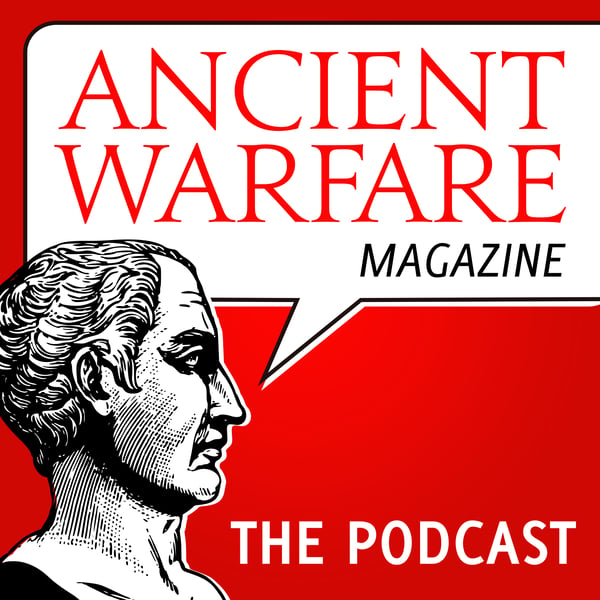Warriors of the Hellenistic Age
Ancient Warfare Podcast
The History Network
4.4 • 631 Ratings
🗓️ 29 March 2016
⏱️ 53 minutes
🧾️ Download transcript
Summary
In this episode we’ll be looking at Ancient Warfare Magazine volume 9, issue 5 “At the point of a Sarissa: Warriors of the Hellenistic age”
To discuss the topic Angus is joined by Josho Browuers, Murray Dahm and Marc de Santis.
Transcript
Click on a timestamp to play from that location
| 0:00.0 | Hello and welcome to another episode of the Ancient Warfare magazine podcast. I'm Angus Wallace. |
| 0:06.2 | In this episode, we'll be looking at volume 9, issue 5, at the point of a Sarissa, Warriors of the Hellenistic Age. |
| 0:14.7 | To discuss the topic, I'm joined by Joshua Browse, Murray Darm, and Mark DeSantis. |
| 0:20.8 | So let's start with with Hellenistic Age. |
| 0:23.2 | When are we talking about? |
| 0:25.0 | The usual definition of the Hellenistic Age is the death of Alexander |
| 0:27.6 | through to the Battle of Actium, which, you know, 323 to 31 BC. |
| 0:35.1 | And of course, weirdly that's also a geographic limitation because that also |
| 0:40.3 | encompasses the second Punic War and the rise of the Roman Empire as well and well and indeed |
| 0:48.3 | even the first Punic War so it's a it's a sort of a geographic region of the eastern Mediterranean and the former |
| 0:55.9 | Alexandrian Empire is what makes the Hellenistic period, even though it's actually also a |
| 1:02.9 | geographic region. |
| 1:03.8 | With the death of Alexander, did the armies resemble, carry on resembling and fighting his style |
| 1:10.0 | of war? I think largely that they did. The main |
| 1:14.9 | change, the main difference between Alexander's army and the armies of his Hellenistic successors |
| 1:20.8 | was the greater reliance on the successors on infantry, the phalanx, less on cavalry. |
| 1:30.3 | Alexander mainly used the phalanx as his, you know, fixed the enemy in place, he would |
| 1:37.3 | operate off and deliver the phalanx and deliver the death blow to the enemy army with his cavalry, |
| 1:43.3 | which he led in person. |
| 1:45.2 | It seems that in successor armies, it was the phalanx that was the most powerful arm, |
| 1:52.1 | maybe because they had fewer cavalry. |
| 1:55.4 | They did incorporate elephants, too. |
... |
Please login to see the full transcript.
Disclaimer: The podcast and artwork embedded on this page are from The History Network, and are the property of its owner and not affiliated with or endorsed by Tapesearch.
Generated transcripts are the property of The History Network and are distributed freely under the Fair Use doctrine. Transcripts generated by Tapesearch are not guaranteed to be accurate.
Copyright © Tapesearch 2025.

